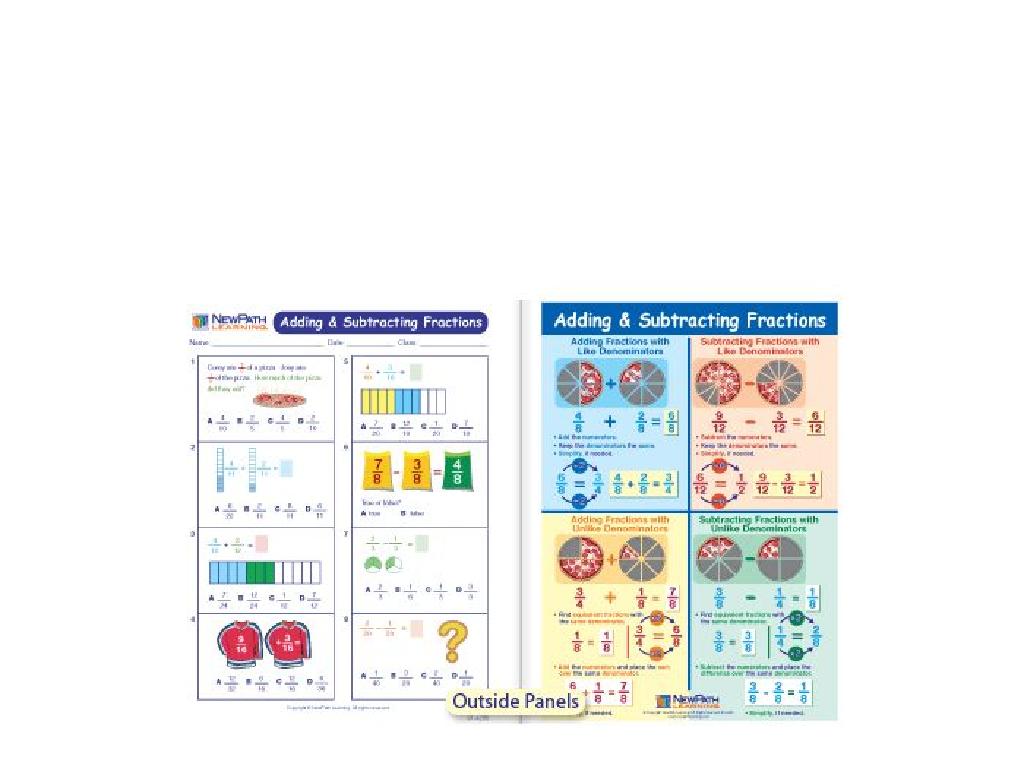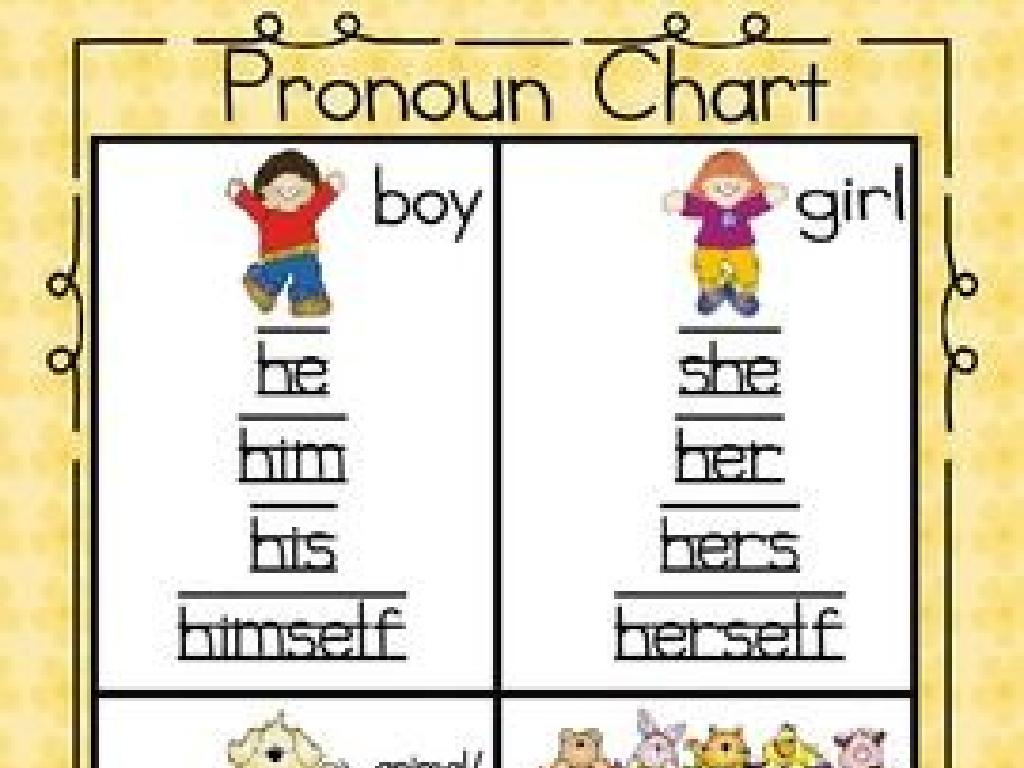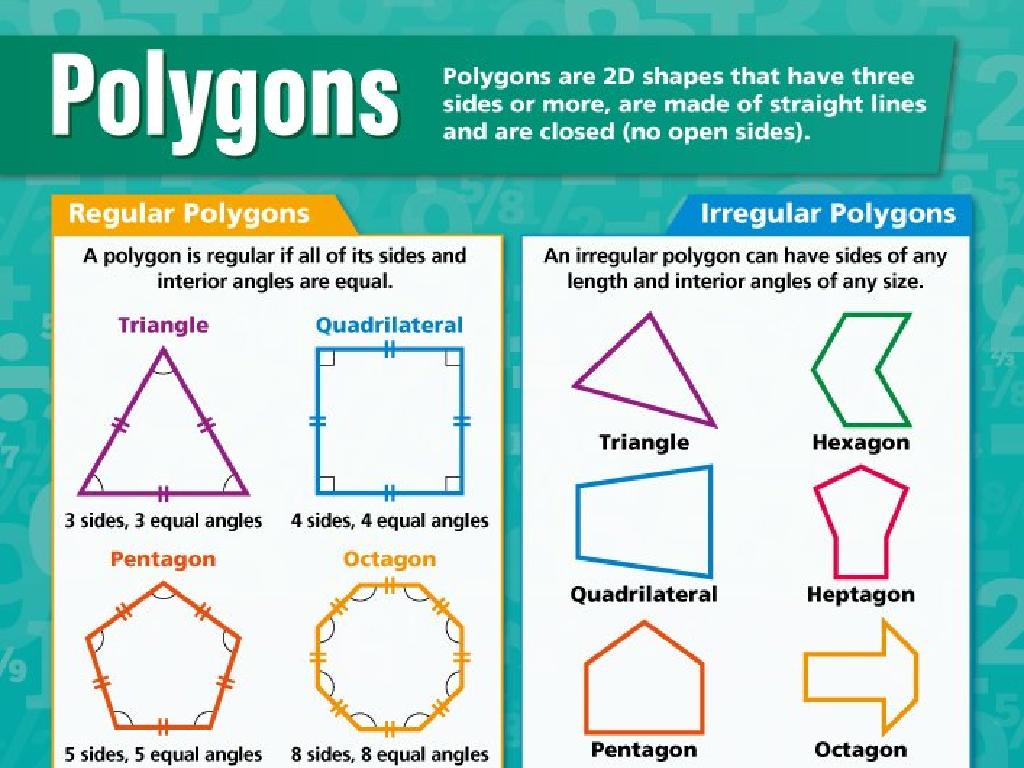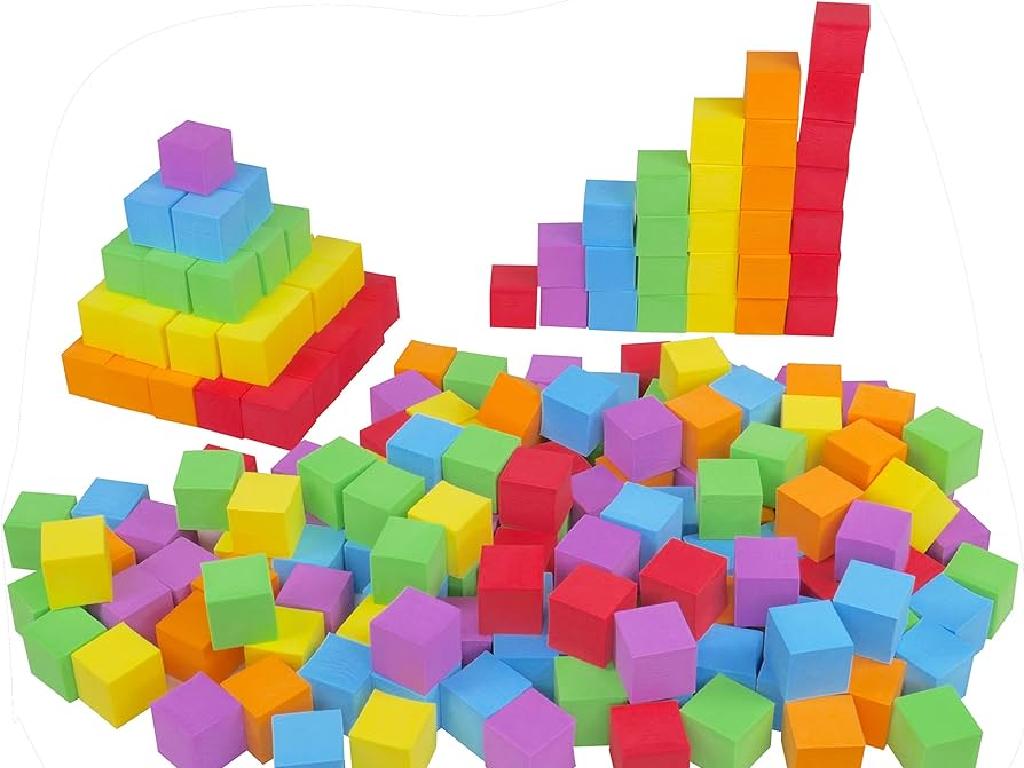Determine The Meanings Of Words With Prefixes And Suffixes: Review
Subject: Language arts
Grade: Fourth grade
Topic: Prefixes And Suffixes
Please LOG IN to download the presentation. Access is available to registered users only.
View More Content
Exploring Prefixes and Suffixes
– What are prefixes and suffixes?
– Prefixes and suffixes are word parts added to base words to change their meanings.
– Prefixes: Adding meaning at the start
– Examples: ‘un-‘ in ‘unhappy’ means ‘not’, ‘pre-‘ in ‘preview’ means ‘before’.
– Suffixes: Changing words at the end
– Examples: ‘-ful’ in ‘hopeful’ means ‘full of’, ‘-less’ in ‘careless’ means ‘without’.
– Practice with examples
– We’ll use examples to see how they modify the meanings of words.
|
This slide introduces the concept of prefixes and suffixes to the students. Start by explaining that prefixes are added to the beginning of words to alter their meanings, while suffixes are added to the end. Provide clear examples for each to illustrate how they can change the meaning of the base word. For instance, ‘un-‘ can turn ‘known’ into ‘unknown’, and ‘-ness’ can change ‘happy’ into ‘happiness’. Encourage the students to think of more examples and to notice how the addition of these word parts can turn a word into its opposite or show its relation to something else. The practice with examples will help solidify their understanding and prepare them for identifying these in new vocabulary.
Exploring Prefixes
– Prefixes: Beginning of a word
– Groups of letters added to the start
– They modify word meaning
– Example: ‘un-‘ means not
– ‘unhappy’ means not happy
– Example: ‘re-‘ means again
– ‘redo’ means to do again
|
This slide introduces the concept of prefixes to the students. Prefixes are a group of letters placed before the root of a word to alter its meaning. For example, adding ‘un-‘ to ‘happy’ changes the meaning to ‘not happy.’ Similarly, ‘re-‘ added to ‘do’ changes the meaning to ‘do again.’ It’s important to show students how prefixes can completely change the meaning of the word they are attached to. Encourage students to think of other words with these prefixes and discuss how the meaning changes. This will help them understand how to determine the meaning of new words they encounter.
Exploring Suffixes
– Definition of suffixes
– Suffixes are letter groups added to word ends.
– Suffixes alter meaning
– They can modify the meaning of the word.
– Suffixes change word types
– They can turn a word into a different part of speech.
– Examples of suffixes
– ‘Wonderful’ means full of wonder, ‘kindness’ means the state of being kind, ‘quickly’ means in a quick manner.
|
This slide introduces the concept of suffixes to the students. Begin by explaining that suffixes are a set of letters added to the end of a word to change its meaning or function. Emphasize how suffixes can transform a word into a different part of speech, such as an adjective (‘wonderful’), a noun (‘kindness’), or an adverb (‘quickly’). Provide examples to illustrate the changes in meaning and function. Encourage students to think of other words they know that have suffixes and discuss how the suffixes alter those words. This will help them understand the power of suffixes in word formation and vocabulary development.
Breaking Down Words with Prefixes and Suffixes
– Understand parts of a word
– Find prefix, root, and suffix
– Example: ‘Unbelievable’
– ‘Un-‘ means not, ‘believe’ is the root, ‘-able’ means capable of
– Practice with different words
– Try breaking down ‘unhappy’, ‘redo’, ‘careless’
|
This slide aims to review the concept of prefixes and suffixes for the students. Start by explaining that many words are made up of different parts: a prefix at the beginning, a root word in the middle, and sometimes a suffix at the end. Each part contributes to the word’s overall meaning. Use ‘unbelievable’ as an example to show how ‘un-‘ changes the meaning of the root word ‘believe’ to its opposite, and how ‘-able’ turns it into an adjective meaning ‘capable of being believed’. Encourage students to apply this understanding by breaking down more words. Provide guidance on how to identify each part of the word and determine its meaning. This activity will help reinforce their vocabulary skills and their ability to understand new words.
Exploring Prefixes: Adding Meaning to Words
– ‘un-‘ means ‘not’: ‘unhappy’
– ‘un-‘ negates, making ‘unhappy’ mean ‘not happy’
– ‘re-‘ means ‘again’: ‘redo’
– ‘re-‘ indicates doing something again, as in ‘redo’ means ‘do again’
– ‘pre-‘ means ‘before’: ‘preview’
– ‘pre-‘ gives a sense of time, ‘preview’ is to ‘view before’
– Practice with prefixes
|
This slide reviews the concept of prefixes and how they alter the meanings of words. Prefixes are groups of letters placed before the root of a word to modify its meaning. ‘Un-‘ changes the meaning of a word to its opposite, ‘re-‘ indicates an action is done again, and ‘pre-‘ typically gives a sense of time, indicating something occurs before another event. Encourage students to think of other examples and use them in sentences. For practice, students can create a list of words using these prefixes or find examples in their reading material.
Suffixes: Changing Word Forms
– Suffixes transform verbs to adjectives
– ‘joy’ becomes ‘joyful’ with ‘-ful’
– Form nouns from adjectives with suffixes
– ‘kind’ becomes ‘kindness’ with ‘-ness’
– Create adverbs from adjectives using suffixes
– ‘quick’ becomes ‘quickly’ with ‘-ly’
|
This slide reviews how suffixes change the form of words in different ways. A suffix is a group of letters added to the end of a word to create a new word or change the word’s function. For example, adding ‘-ful’ to ‘joy’ turns it into ‘joyful,’ an adjective. By adding ‘-ness’ to ‘kind,’ we form the noun ‘kindness.’ Similarly, ‘-ly’ can be added to ‘quick’ to form the adverb ‘quickly.’ Encourage students to think of other examples and understand how the addition of a suffix can change the meaning and grammatical role of a word in a sentence.
Let’s Practice with Prefixes and Suffixes!
– Add prefixes and suffixes to root words
– Prefixes like ‘un-‘ or ‘re-‘ and suffixes like ‘-ful’ or ‘-less’ change the word’s meaning.
– Observe how meanings change
– ‘Happy’ becomes ‘unhappy’ with a prefix, ‘happiness’ with a suffix.
– Share your answers with the class
– Discuss your new words and their meanings in our next class.
– Fun with word construction
|
This slide is for a class activity where students will practice adding prefixes and suffixes to root words to see how they alter the meaning. Start by explaining what prefixes and suffixes are, using examples. Then, have students create their own list of words by adding prefixes and suffixes to given root words. Encourage them to think about the new meanings they’ve created. Afterward, students will share their words and discuss the new meanings as a class. This activity will help reinforce their understanding of how prefixes and suffixes modify word meanings and expand their vocabulary. Possible activities: 1) Matching game with prefixes/suffixes and root words, 2) Creating a story using the new words, 3) Word construction relay race, 4) Drawing pictures to illustrate the new words, 5) Prefix and suffix ‘word hunt’ in their favorite books.
Class Activity: Word Creators
– Form new words with prefixes/suffixes
– Discuss meanings of new words
– How does adding a prefix or suffix change the root word?
– Choose the most interesting word
– Present your word to the class
– Share why you find it interesting and its new meaning
|
This activity is designed to help students understand how prefixes and suffixes alter the meanings of root words. Divide the class into small groups and provide a list of root words. Each group will create new words by adding prefixes and/or suffixes. They will then discuss the new meanings of these words within their groups. Each group will select their most interesting word, discuss why it’s interesting, and prepare a short presentation to explain the word and its meaning to the class. For the teacher: Have a list of prefixes and suffixes available for reference, and be ready to guide discussions and presentations. Encourage creativity and ensure that each student participates in the activity.
Review: Prefixes and Suffixes
– Recap on prefixes and suffixes
– Prefixes/suffixes are word parts added to base words
– Understanding word meanings
– They change the meaning of the base word
– Examples of prefixes and suffixes
– ‘Unhappy’ or ‘redo’ are examples with ‘un-‘ and ‘re-‘ prefixes
– Reflect on today’s learning
|
Today’s lesson focused on the role of prefixes and suffixes in word formation and comprehension. Prefixes are added to the beginning of a base word to alter its meaning, while suffixes are added to the end. Understanding these can help students deduce the meaning of unfamiliar words, enhancing their vocabulary and reading skills. Encourage students to think of other words that include the prefixes and suffixes discussed today. This reflection reinforces their learning and allows them to apply their knowledge. As a teacher, provide additional examples if needed and praise students for their efforts and participation.
Homework Challenge: Prefixes and Suffixes
– Find words with prefixes in a book
– Find words with suffixes in a book
– Write down the words and meanings
– Prefixes/suffixes change a word’s meaning. Example: ‘unhappy’ where ‘un-‘ means ‘not’.
– Share your discoveries next class
|
This homework task is designed to reinforce the students’ understanding of prefixes and suffixes and how they alter the meanings of words. Encourage the students to select a book they enjoy and look for ten words in total, five with prefixes and five with suffixes. They should write down these words along with their meanings, considering how the prefix or suffix changes the base word. In the next class, students will have the opportunity to share their findings, promoting discussion and deeper understanding of the concept. Provide examples of common prefixes and suffixes, such as ‘un-‘, ‘re-‘, ‘pre-‘, ‘-ful’, ‘-less’, and ‘-ness’ to guide their search.






